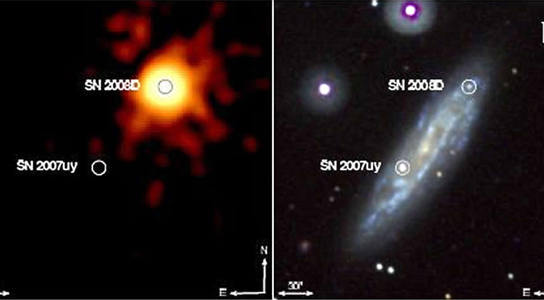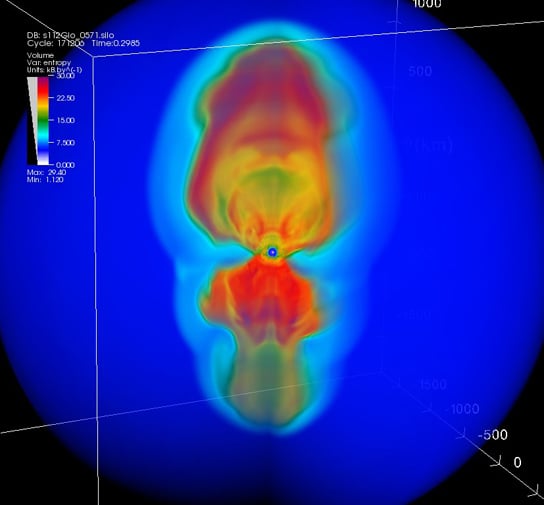
When massive stars accumulate more iron than they can hold, they explode in what is called a core-collapse supernova, also known as Type II supernovae. Such supernovae will enrich their surroundings with key elements, seeding them for the formation of other stars. Now, cosmologists and extragalactic astrophysicists have linked the number of core-collapse supernovae (CCSN) in a galaxy with the actual star formation rate (SFR).

Maria-Teresa Botticella, at the Padua Astronomical Observatory, Italy, and her colleagues compared star-formation estimates, which was based on core-collapse explosions, to those on a conventional measurement of galactic brightness, based on Hα, far ultraviolet (FUV) and total infrared (TIR) galactic luminosities.
The CCSN rate provides a strong lower limit for the star formation rate. By adopting an estimate of the minimum stellar mass to produce CCSN, they determined a SFR from supernovae numbers. The supernova statistics also provide a constraint on the minimum stellar mass for their core collapse supernova progenitors.

Since Hα, (FUV) and (TIR) luminosities were available for a complete galaxy sample, within a local 11 megaparsec volume, and the number of discovered supernovae in this sample is high enough to perform a meaningful comparison, the researchers exploited a multi-wavelength dataset from 11HUGS (11Mpc Hα UV Galaxy Survey). This volume-limited survey provided a census of SFR in the Local Volume.
There are a total of 14 supernovae discovered within this sample of galaxies and while this might not be complete, it provided a robust lower limit. The researchers assumed a lower limit of core collapse of 8 M⊙ (solar masses), which was proposed by direct detections of supernova progenitor stars and white dwarf progenitors. The CCSN rate matches the SFR for the FUV luminosity.
However, the SFR based on Hα luminosity is lower by two factors than those two estimates. This entails that the minimum mass for CCSN progenitors is 8 ± 1 M⊙ and 6 ± 1 M⊙, for FUV and Hα respectively.
The conclusion is that the minimum mass for CCSN progenitors is 8 ± 1 M⊙, on the lower mass limit, exploiting the FUV luminosity for the minimal constraint.
References:
“A comparison between star formation rate diagnostics and rate of core collapse supernovae within 11 Mpc” by M. T. Botticella, S. J. Smartt, R. C. Kennicutt Jr., E. Cappellaro, M. Sereno and J. C. Lee, 23 January 2012, Astronomy & Astrophysics.
DOI: 10.1051/0004-6361/201117343
“Core-collapse and star formation” 8 February 2012, Nature.
DOI: 10.1038/482135b
Never miss a breakthrough: Join the SciTechDaily newsletter.